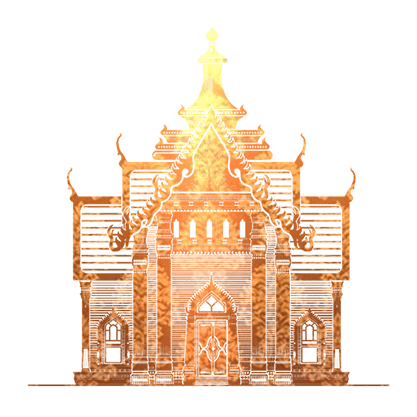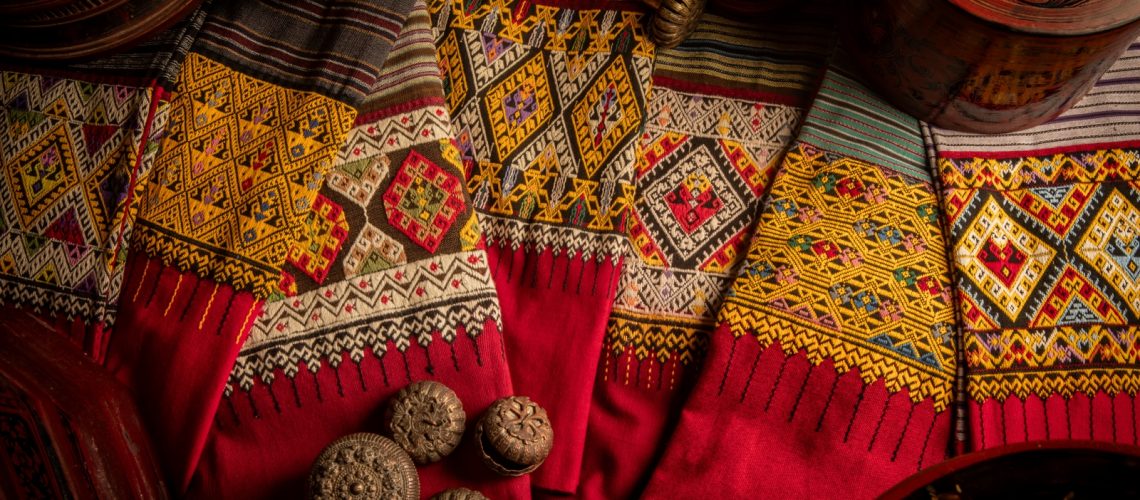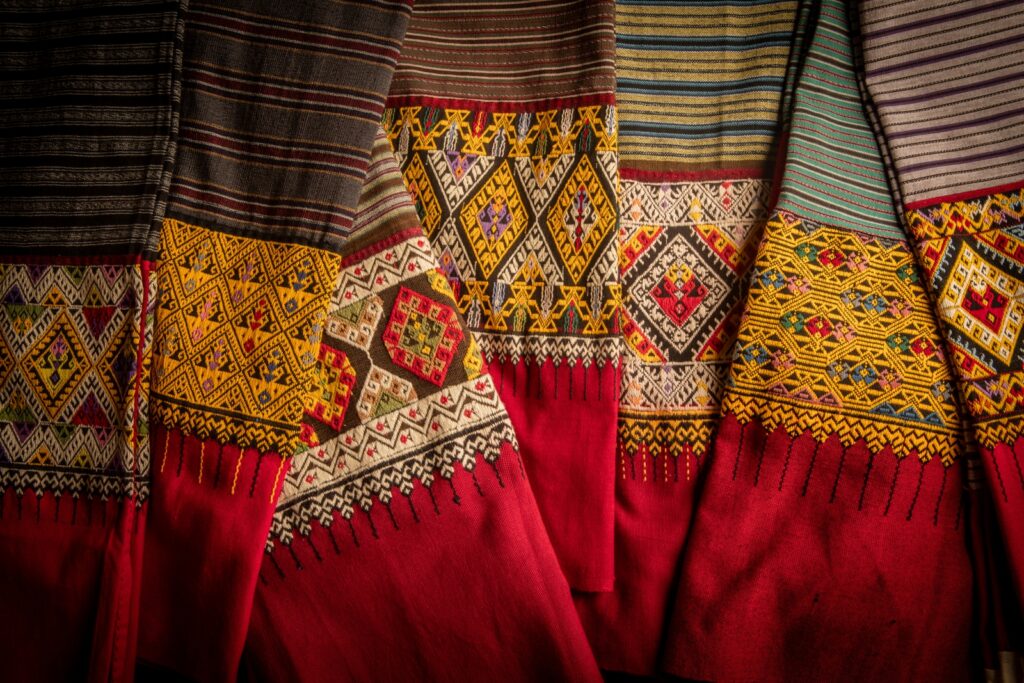
Discover ‘Nam Tuam Sinh’: The Exquisite Fabrics and Heartfelt History of Doi Tao People in Chiang Mai,
Reflecting the Legacy of Ping River’s Past Prosperity
“Nam Tuam Sinh” (Nam Tuam meaning flood), refers to a Tai Yuan skirt traditionally worn by a community living around Doi Tao Lake in Chiang Mai Province. The name Nam Tuam Sinh originated because the local weavers were impacted by the construction of the Bhumibol Dam, which caused flooding in their residential areas. As a result, they had to evacuate and relocate from their homeland.
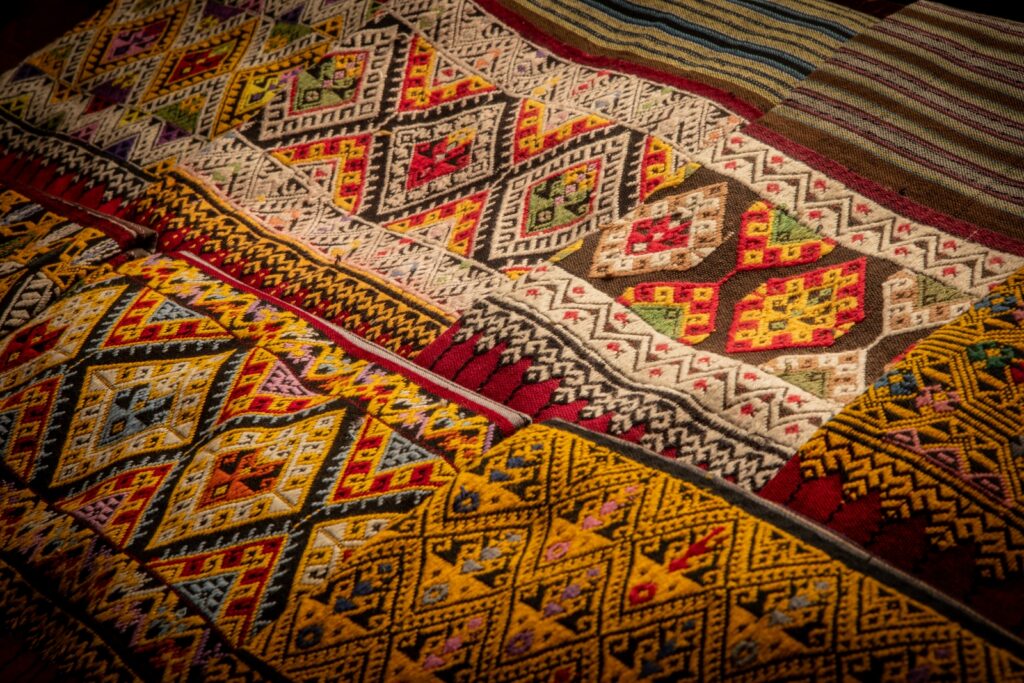
The Tin Jok woven cloth featuring the Nhi Nam Tuam (Flood Escape) pattern derives its name from the original communities that line both banks of the Ping River. This fabric has a long history of weaving, rooted in the experiences of those impacted by flooding. Mrs. Kaewla Phromthep, the keeper of this traditional Tin Jok cloth, shared her insights, saying, “…In the past, I lived in a house along the banks of the Ping River, where I first encountered the art of Tin Jok weaving. My mother was an adept weaver, crafting numerous sacks. Once she had woven more than enough, she would pass them down to her children and grandchildren.” Historically, Tin Jok fabric was regarded as valuable as gold, making it a sought-after item among the affluent. The cost of Tin Jok fabric ranged from 100 – 500 baht, whereas the average daily wage for villagers was merely about 8 baht. Consequently, many low-income individuals struggled to afford this luxurious fabric, which was viewed as a privilege rather than a necessity. In the years 1963-1964, following the completion of the Bhumibol Dam, water from the dammed Ping River overflowed from the Sam Ngao District in Tak Province, affecting both banks of the river in Doi Tao District. This disaster impacted 21 villages over a 54 square kilometer area, flooding agricultural lands and homes and forcing residents to evacuate to designated areas within the “Nikhom Sang Ton-Eng Khuean Bhumibol (Bhumibol Dam Self-Help Settlement).” During this time, Tin Jok fabric was still considered extremely precious, prompting immigrants to carry it with them, which is why it continues to be referred to as “Nam Tuam” woven fabric today.
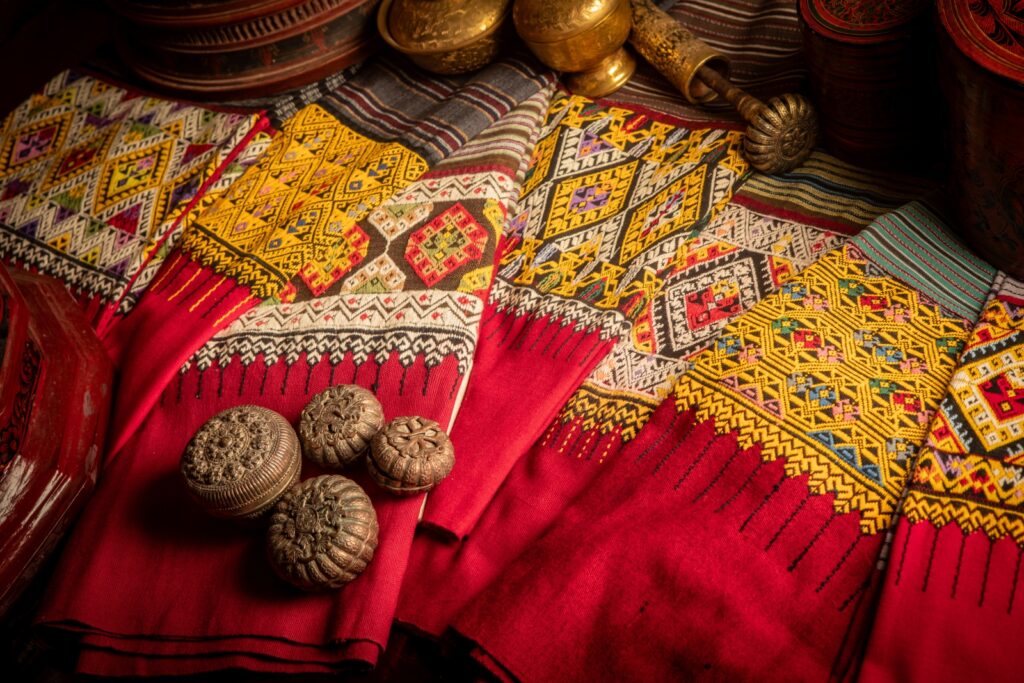

The Bhumibol Dam obstructs the Ping River in the Sam Ngao District of Tak Province, creating a water storage area that stretches approximately 207 kilometers to the Hot District in Chiang Mai Province.
(Image from Electricity Generating Authority of Thailand)

Image from https://doitao.info
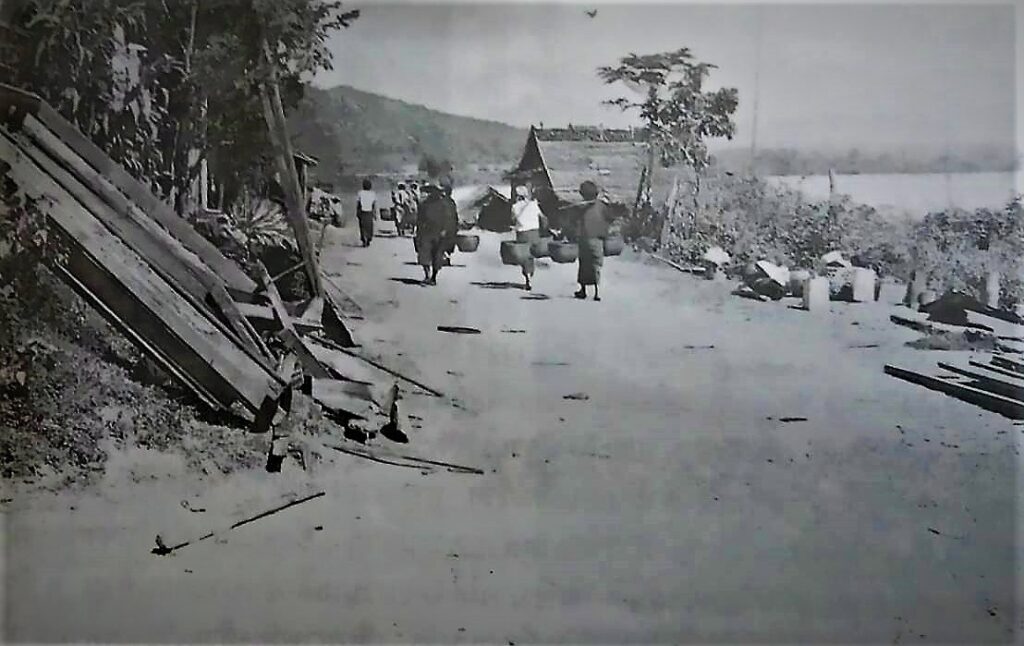
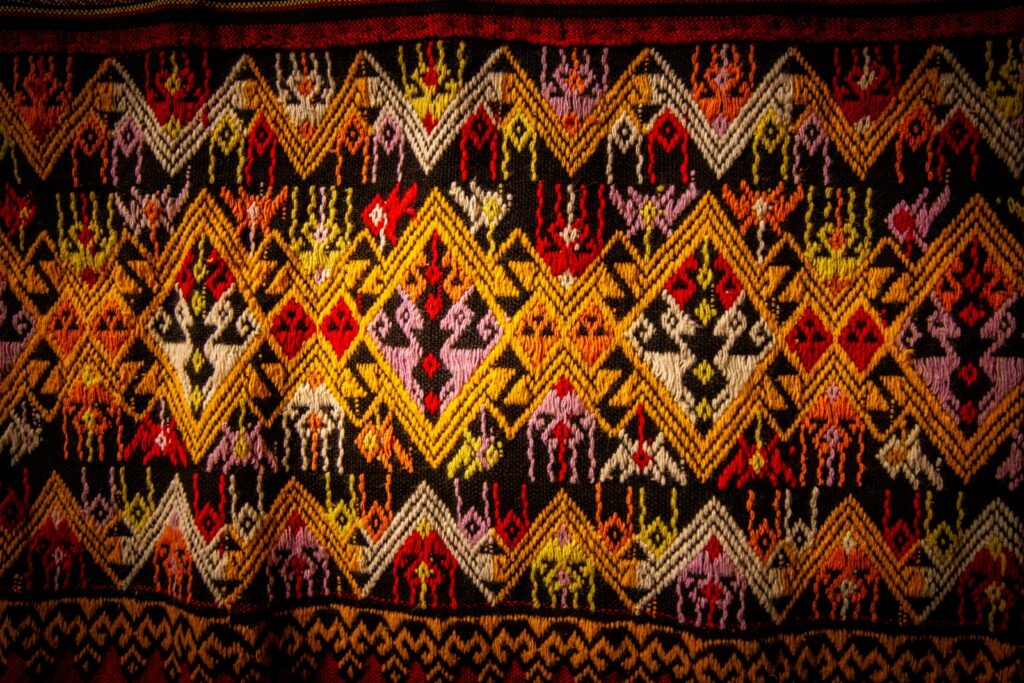
Nam Tuam Sinh is a renowned type of Tin Jok Sinh from Chiang Mai Province, distinguished by its unique weaving pattern, which rivals the beauty of Mae Chaem Tin Jok Sinh. To specify the region associated with this celebrated handicraft, it encompasses the entire Doi Tao Lake area of Chiang Mai Province, an ancient community that thrived in various aspects
throughout its history. Nam Tuam Sinh features a distinctive pattern akin to that of Mae Chaem Tin Jok Sinh, showcasing the local textile traditions of the Ban Doi Tao community in Chiang Mai Province. This woven fabric possesses unique characteristics that reflect a rich heritage, with patterns, colors, and fabric structures that have been preserved over generations, including the Tin Jok woven fabric adorned with the Nhi Nam Tuam pattern. The patterns are classified into two categories: the primary pattern, which is a larger design that serves as the central feature where the Jok is situated, typically presented as a diamond shape. There are nine specific patterns, including the Kom Hong Nok, Kom Nok Lai, Kom Nok Pet, Kom Hua Kut, Kom Kra Jae, Kom Kho Bet, Khiaw Ma Noi, Kho Pak Kut, and Dok Bua Kham patterns.
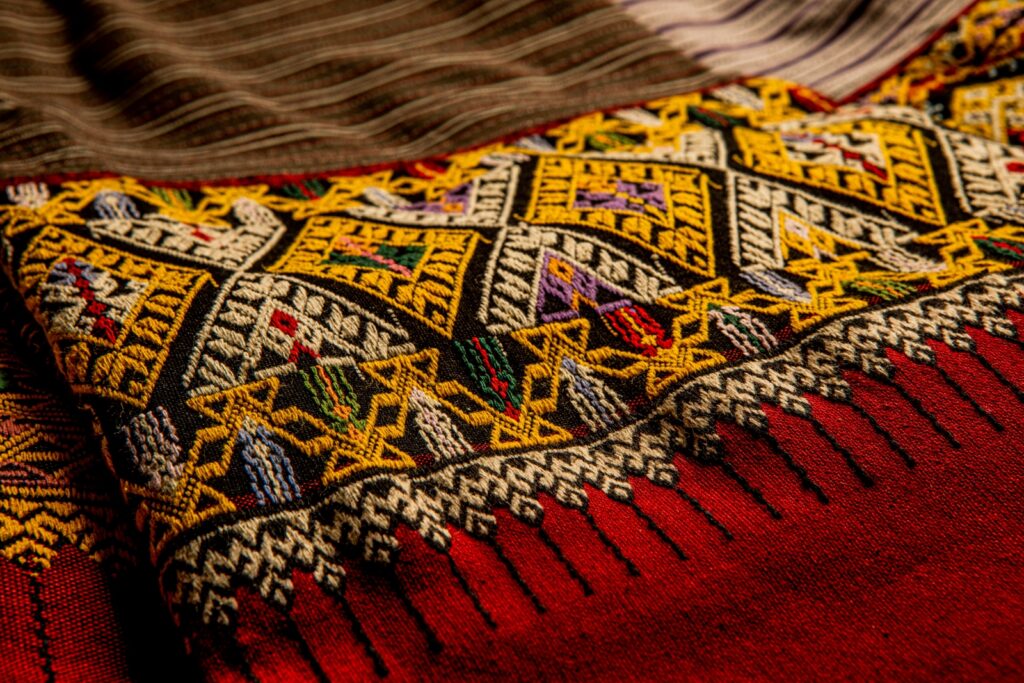
Composite patterns consist of smaller designs typically arranged symmetrically on either side of the main pattern. There are 18 distinct patterns in this category, including the Kam Pung, Hong Nok, Heua Sapao Kham, Sai Fa Luang, Khruea Nok Lai, Kab Sak, Kut Kam Ber, Ie Nia Son Sai, Chan Luang, Chan Klip, Soi Nok Dok Mak, Khan Koeng, Khan Ngieng, Khan Dok, Nam Ton, Khiaw Ma Luang, Kab No, and Python Scale patterns. Sub-patterns can also be referred to based on their specific sections within the overall design. For example, there are Type 1 patterns, which include the Kom and Khan patterns; Type 2 patterns, which consist of the Khruea and Kut patterns; and Type 3, known as mixed patterns. The names of the patterns in the fabric often reflect the weaver’s imagination, drawing inspiration from natural elements like plants and animals.
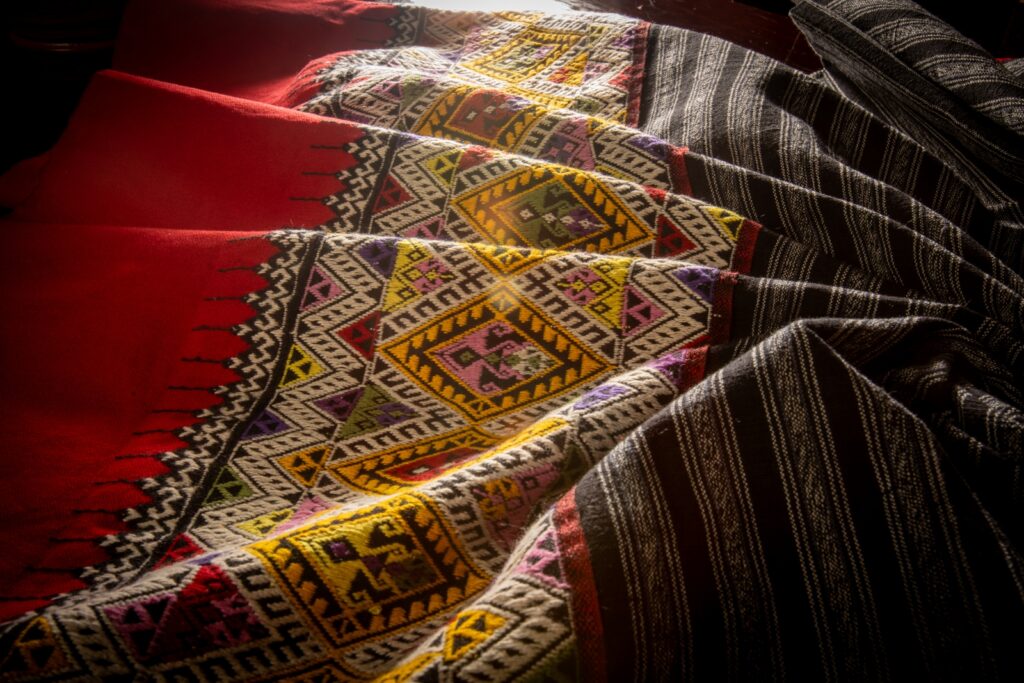
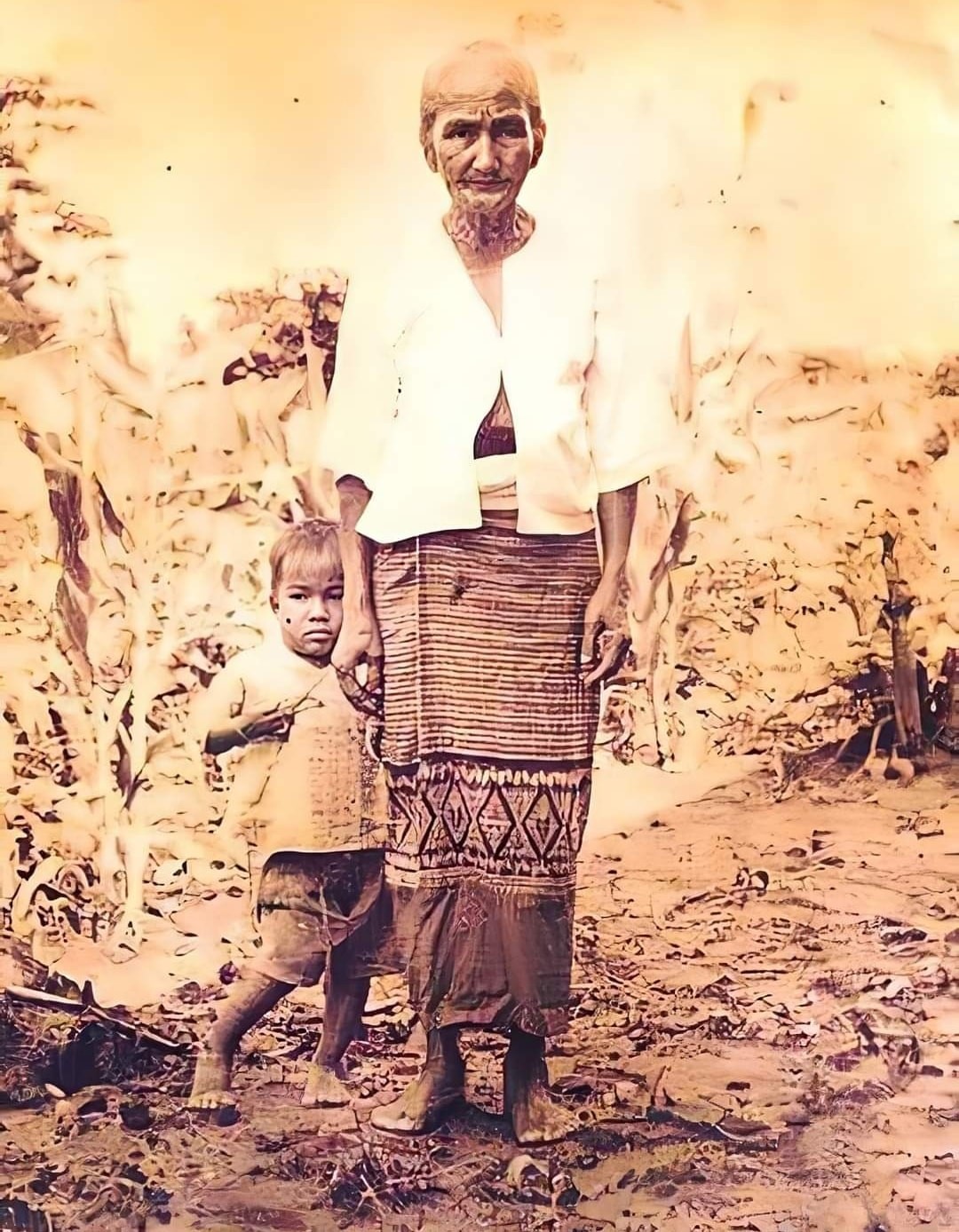
The components of Tin Jok woven fabric featuring the Nhi Nam Tuam pattern include the Sapao tail, which is characterized by its distinctive qualities. This tail typically favors the use of yellow and black cotton threads over black and white threads. The Sapao tail is relatively short and generally consists of a single color rather than alternating colors, as seen in other designs. Additionally, the Sapao section is wide, while the Tin Sinh constitutes the lowest part of the fabric. In the construction of Tin Jok woven fabric, red cotton is predominantly used in a plain weave pattern, with little inclination to incorporate any other colors besides red.
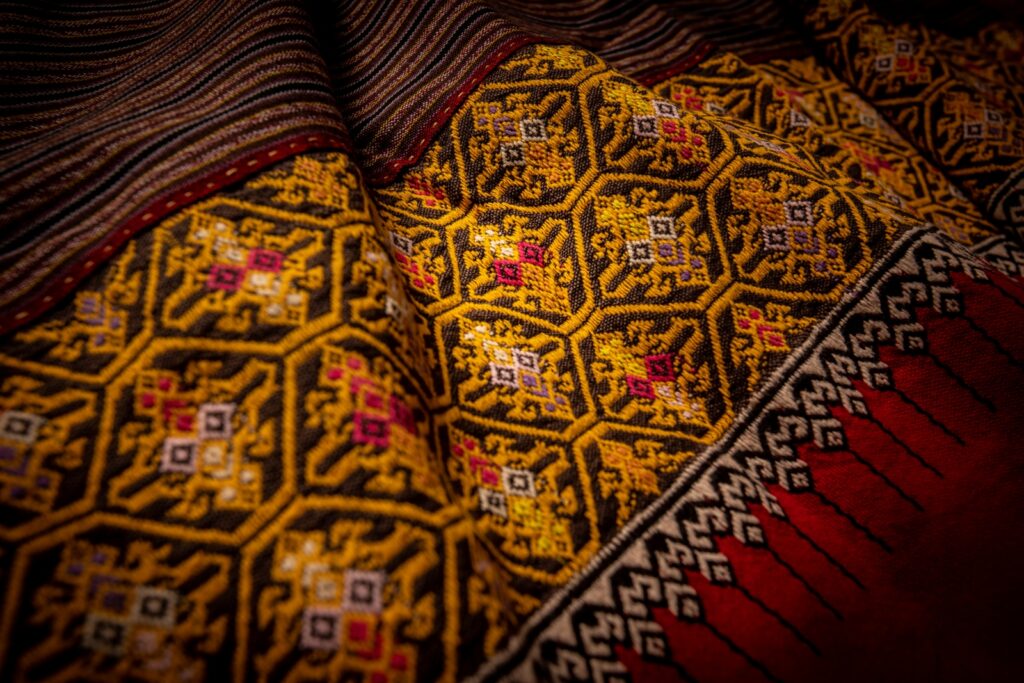
Historically, Tin Jok fabric featuring the Nhi Nam Tuam pattern played a significant role in daily life, as well as in traditional ceremonies, merit-making events, and funerary practices, where it was worn by the deceased before cremation. Today, while Tin Jok fabric continues to be used in traditional ceremonies and merit-making activities, its application in funerary rites has diminished. This change is largely due to the increasing rarity and high value of old Tin Jok fabric, which is now often regarded as a collectible rather than a disposable item for such purposes.
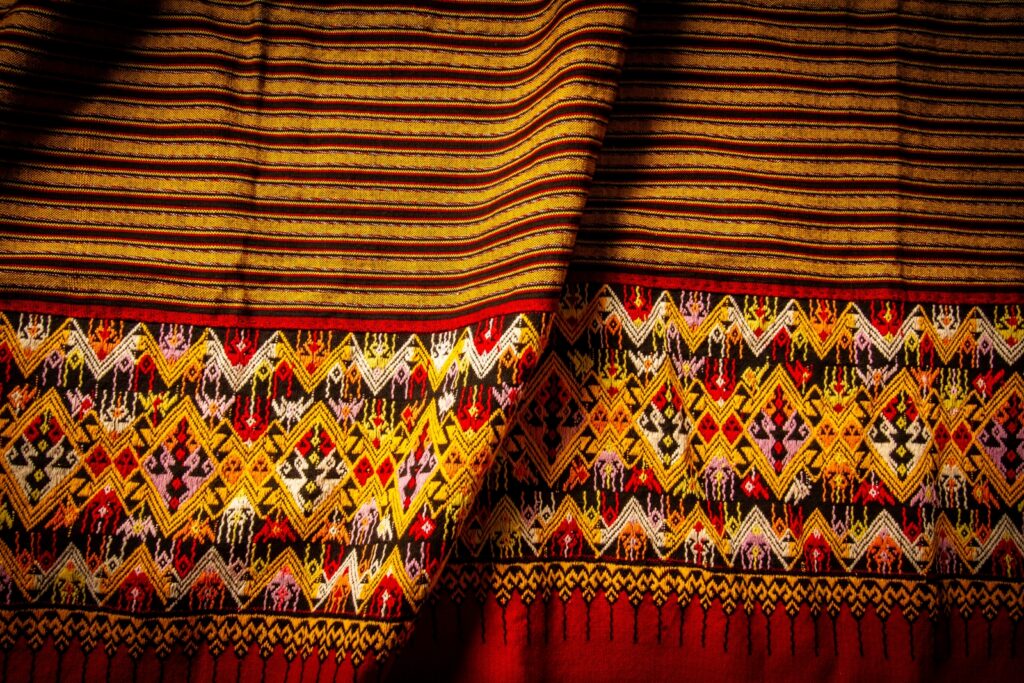
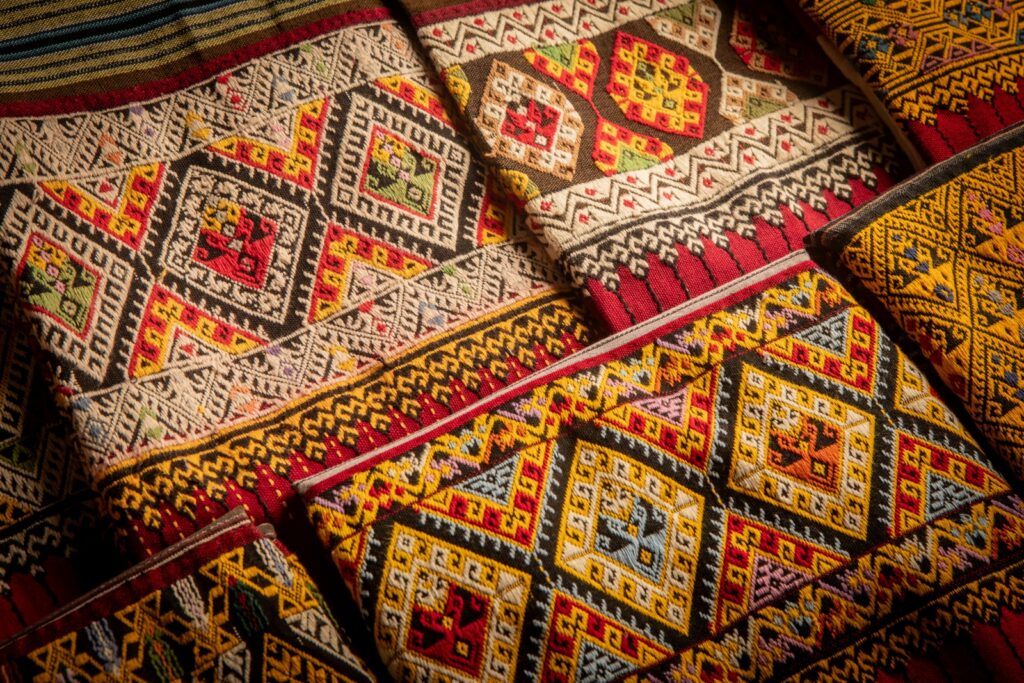
Ref : แก้วกุดั่น. (2562). ลายผ้าโบราณ…สืบทอดผ่าน “ครูภูมิปัญญา”. สกุลไทยออนไลน์, หนังสือ ซิ่นตีนจกแห่งลุ่มแม่น้ำปิง
An author assistant Nonthawat Ningjaiyen
TRULY THAI AUTHENTIC DESTINATION
>>ติดตามเรื่องราวความเป็นไทยอย่างใกล้ชิดที่ Thai Style Studio<<
เพราะเราเชื่อว่า “มากกว่าความรู้สึก คือ การได้สัมผัสประสบการณ์ความเป็นไทยด้วยตัวคุณเอง”
